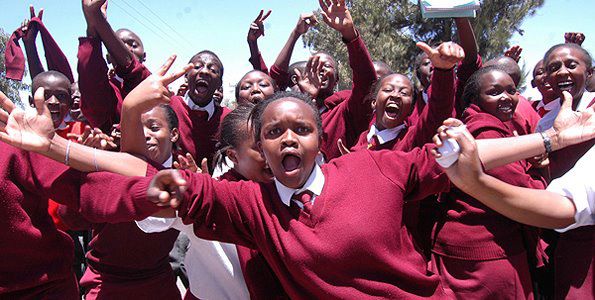By Kipkemboi Toroitich
Girls are gradually catching up with boys in curricular performance, raising the stakes even higher in the 2021 KCSE. This is true in the past decade, although girls have never surpassed boys in the history of examinations in the country, however close they might have come. In the last couple of years, girls have had a reason to celebrate, coming as close as they have done to toppling boys from the top.
Despite the top ten positions being dominated by boys in the 2021 KCSE, girls have proved their mettle by dropping hints they are not about to let go of the boys; with Mwendo Cecily Mutheu, Pita Shekinah Wise and Brenda Cherotich taking charge. They were positions 5, 7 and 9 respectively.
Candidature
A total of 826,807 registered and sat the 2021 exam, out of whom 405,489 were girls. The difference of 421,318 accounted for boys, exposing a gap of only 15,829 more boys than girls. The percentages highlight even a slimmer margin of 50.96 for boys against 49.04 for girls.
Of particular note is the fact that no child who registered missed the exam for whatever reason. In 2020, boys who sat the exam were 380,327 compared to 366,834 girls, a difference of 13,493. The total number of candidates then was 743,299. Further backwards, 341,440 girls sat the 2019 KCSE, whereas boys were 355,782; the difference being 14,342. The total who sat the exam then were 679,222.
On average over the three examination periods, there were 14,555 less girls who sat the examinations than boys.
‘A’ to ‘E’ performance
348 girls scored straight A’s as compared to 789 boys, a sharp difference of 441. For both gender, it was an improvement on the 2020 score, 589 boys and 304 girls having attained the top grade the previous year.
At the same time, 2,154 girls attained a mean grade of A- compared to 3,819 boys, which is almost double the number of girls. The numbers peak at C+ where girls almost level off with the boys having 30,817 and the girls 29,026 of the grade. There were less girls who scored ‘E’ grade than boys, standing at 19,573 and 26,578 respectively. The middle of the curve is dominated by girls, meaning there is likely to be more girls than boys in TVET institutions going forward.
Top ranks
Boys ruled the top ten, with seven out of ten making the cut. In the top 20, there were 5 girls as the boys took the lion’s share. There were additional 13 girls in the top fifty, making it 18 girls in total thus far. 33 girls in total made it to the top 100, which is 33 percent of the crème de la crème of the 2021 KCSE.
Special needs
Both boys and girls categories performed equally well under the special needs category although there were no ‘A’ girls. However, Osoro Branton of Kapsabet Boys and Precious Machuka of Moi Girls –Eldoret scored ‘A’ and ‘A-‘ respectively. Two more special male candidates scored ‘A-‘.
Mixed schools v/s unisex schools
Mixed day secondary schools performed fairly well. Perhaps something of note is that all six schools that topped sub-county schools are not older that fifteen years, most of which have been established in the last ten years.
These schools are Nyakeore Secondary School in Nyanza, which had all candidates qualifying for direct university entry, Kebulonik Secondary School in the South Rift, Banisa Mixed Secondary School in North Eastern, Manyatta Mixed Day Secondary School in Eastern, Shibanga Mixed Secondary School in Western, and Heni Secondary School in Central. 17,327 candidates from such schools managed the minimum university entry grade, with 128 of them getting above A-.
It is, however, not clear how many of them were boys and how many girls.
There was no mixed school in the top ten, with Kisima Mixed in Nyandarua recording an average of 9.55 at position 15. The rest in this top class were one gender schools with the usual big names dominating the top 100.
Underage
The analysis of the underage candidates reveals that in the top 10, girls took majority of positions as they were ranked 1, 3, 6, 7, 9 and 10. Brenda Cherotich of Kipsigis Girls, 16, took charge of proceedings here, with Jane Mutheu (St. Theresa Mbooni Girls), Mercy Wanjiku (Pangani Girls), Gloria Wavinya (Alliance Girls), Dothy Nthenya (Kenya High), and Purity Ngina of Precious Blood Riruta picking the cue. All these minors came from popular unisex schools in the country.






